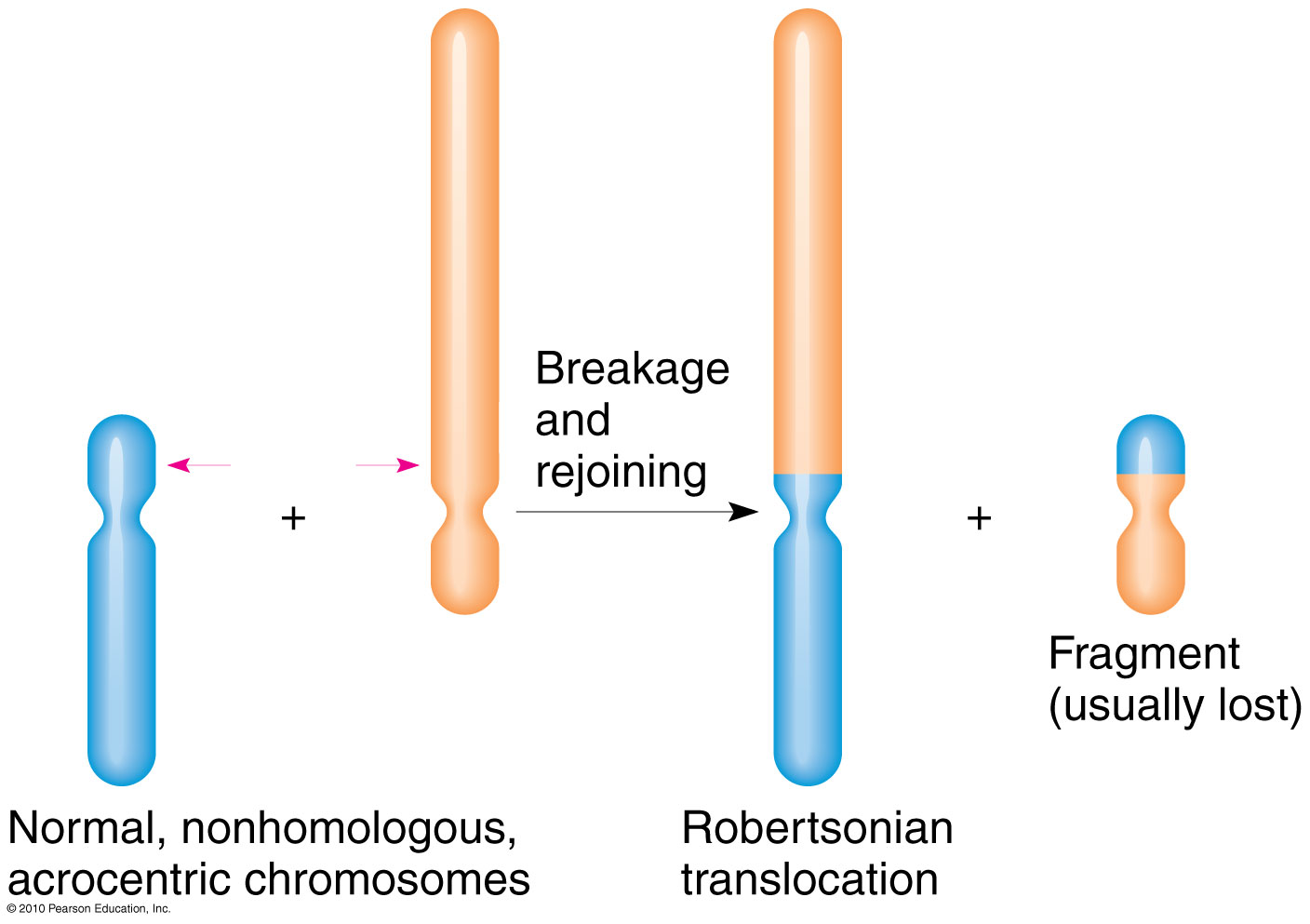
Robertsonian Translocations
Robertsonian Translocations
result in a conservation
of arm number with a change in chromosome number
(counted as centromeres). A Robertsonian fusion combines
the long arms of two telocentric chromosomes: the
tiny short arms are lost, and the result is a reduced number
of chromosomes. The karyotype 'loses' two telocentric
chromosomes and 'gains' a single meta- or acrocentric
chromosome. The reciprocal event [not shown], a Robertsonian
fission, occurs when a
single meta- or acrocentric chromosome breaks at the
centromere, such that the two arms segregrate independently
as two telocentrics.
Note that the gene content is largely conserved. During meiosis, the arms of the metacentric chromosome will typically pair with those of the two telocentric chromosomes. So long as the three centromeres segregate properly [two telocentrics one way, the biarmed chromosome the other], two balanced gametes will result. If in the next generation two translocation gametes unite, the resutant offspring will inherit the translocation in a stable manner and will be fully fertile. For this reason, Robertsonian Transolcation are an important mechanism in evolutionary speciation.
Note that the gene content is largely conserved. During meiosis, the arms of the metacentric chromosome will typically pair with those of the two telocentric chromosomes. So long as the three centromeres segregate properly [two telocentrics one way, the biarmed chromosome the other], two balanced gametes will result. If in the next generation two translocation gametes unite, the resutant offspring will inherit the translocation in a stable manner and will be fully fertile. For this reason, Robertsonian Transolcation are an important mechanism in evolutionary speciation.